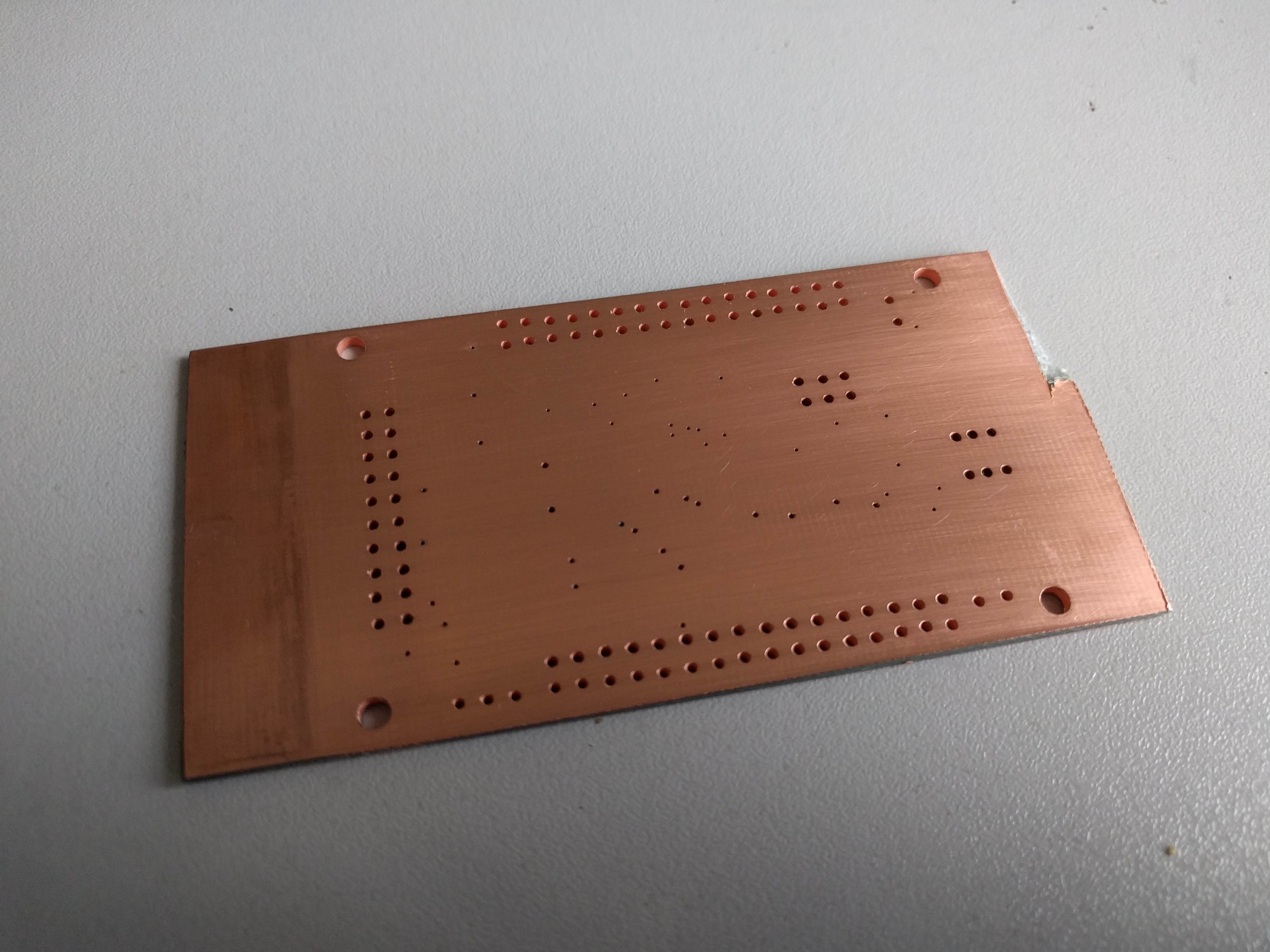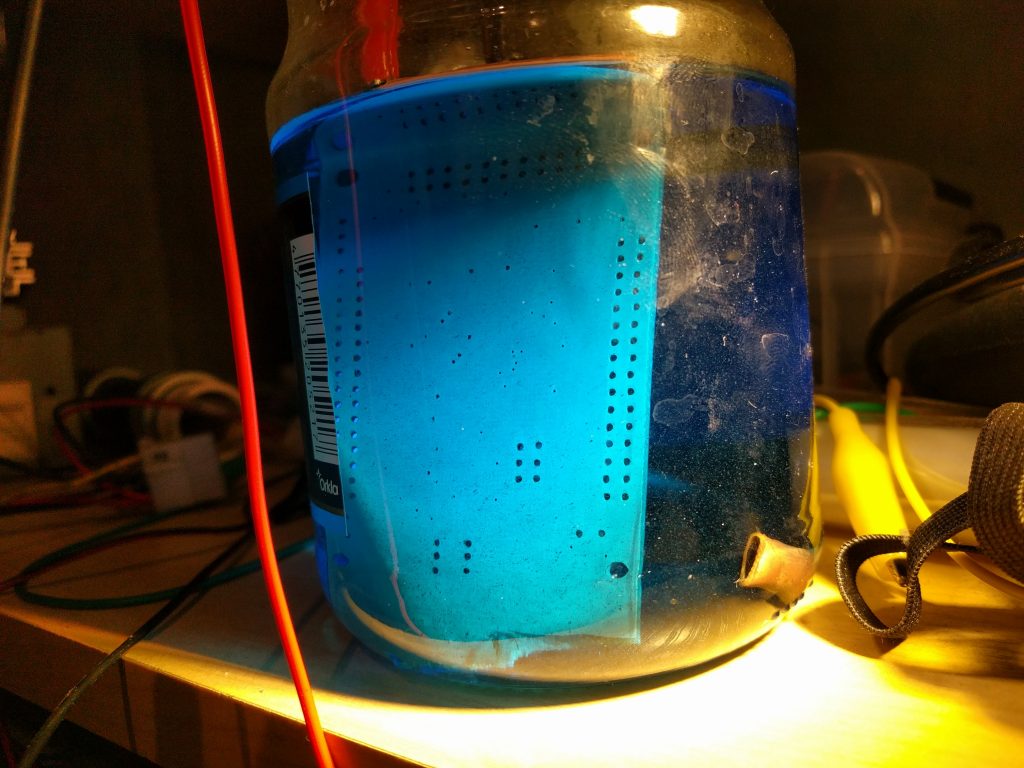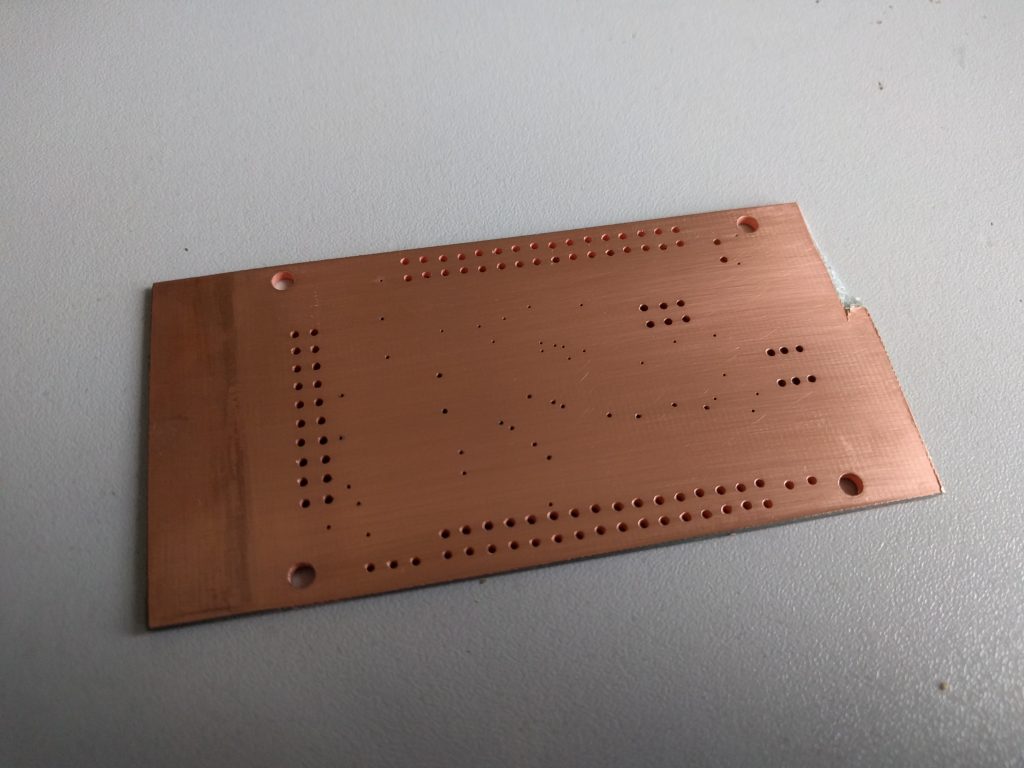I do a lot of PCB prototyping at home and one thing that really annoys me is soldering vias in double sided PCBs. And not just soldering, there are many cases where you can’t get away with soldered vias such as connections under SMD chip or through hole headers which have connections on both sides. So I decided to try copper plating.
Hardest part in this process is hole activation. For the copper electroplating process to work, insides of the holes need to have conductive layer. Industrially this is done using multiple baths of various chemicals to create a very thin copper layer. I could not find many details about this process so I decided to use other methods.
One way is to use conductive paint. You can just brush the paint over PCB and then suck it through the holes with a vacuum cleaner. Unfortunately, I didn’t have any conductive paint at hand. Consulting the internet, I found out that you can make conductive paint by mixing graphite powder with acrylic paint. The resistance of this DIY conductive paint is really high but enough for electroplating.
I then proceeded with electroplating in copper-sulfate solution. You also need a bit of acid for better adhesion and some kind of surfactant to help liquid enter tiny holes.
Initially I used a very small current due to high resistance of the paint to establish a thin but consistent copper layer. After some time you can increase the current, because the copper that is deposited lowers resistance of the holes and allows a faster electroplating.
Here you can see the electroplated PCB. I did a close inspection and it seems that all holes have been plated 100% and the copper adhered strongly. Unfortunately, after etching the PCB I noticed that my tracks layer was mirrored and had to throw the PCB away. I also gave up on electroplating and ordered PCB from china.
Conclusion: PCB copper plating can be done at home but it takes a lot of effort. I don’t think I will ever repeat this procedure unless I urgently need a PCB.



thank you so much , i’m also can’t find any conductive liquid here so i will try mixing graphite powder with acrylic paint